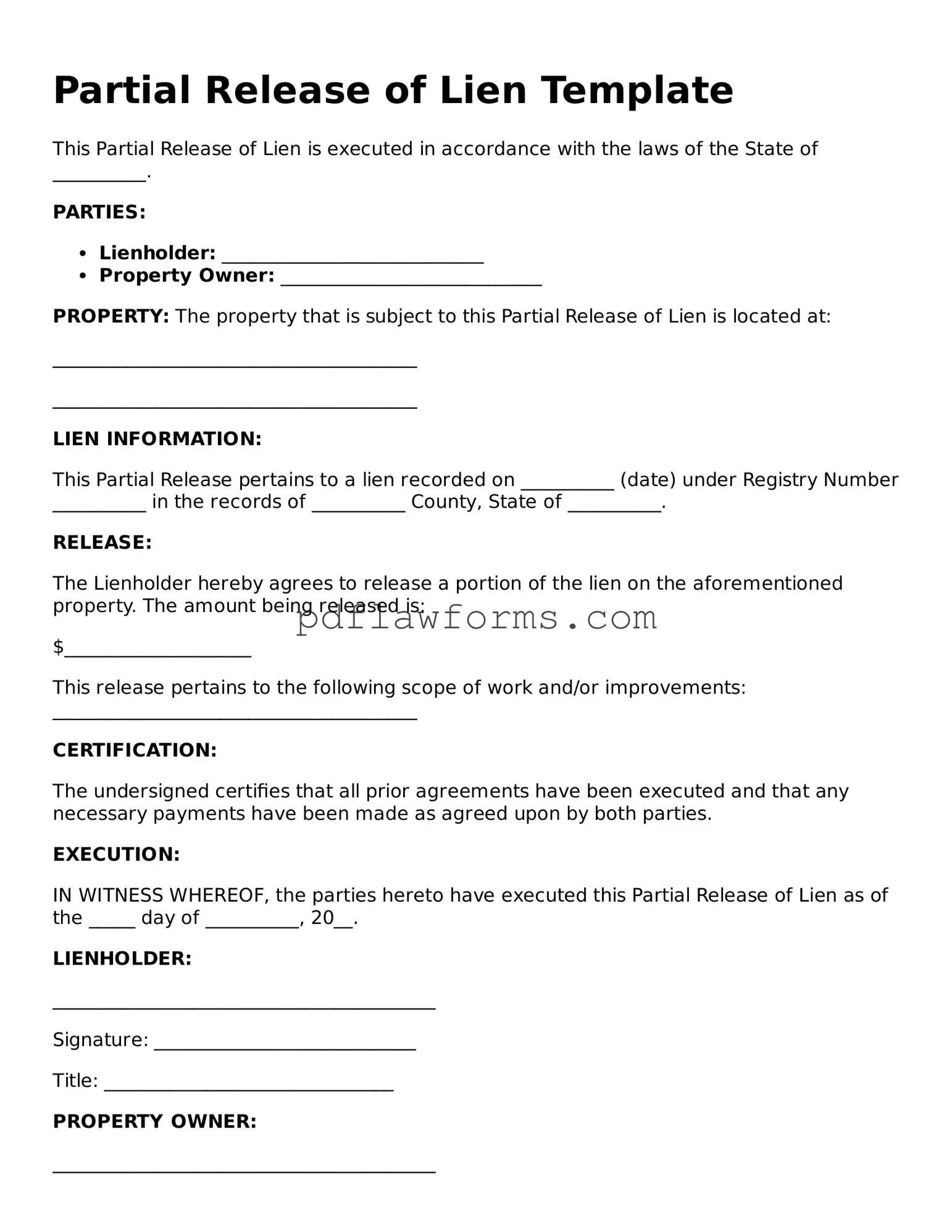Filling out a Partial Release of Lien form can be a straightforward process, but several common mistakes can lead to complications. One frequent error is failing to include accurate property information. The legal description of the property must be precise. Omitting or misrepresenting details can create confusion and potentially invalidate the release.
Another mistake involves incorrect identification of the parties involved. It is essential to ensure that all parties are named correctly, including the lien claimant and the property owner. If names are misspelled or titles are incorrect, this may result in legal disputes later on.
Many people overlook the importance of signatures. A Partial Release of Lien must be signed by the lien claimant. Without a valid signature, the document lacks legal authority. Additionally, notaries may be required in some jurisdictions. Failing to have the form notarized when necessary can also render it ineffective.
Completing the form without understanding the implications is another pitfall. A Partial Release of Lien does not eliminate the entire lien; it only releases a specific portion. Failing to grasp this concept can lead to misunderstandings about remaining obligations.
People often forget to provide the date of execution. Including the date is crucial for establishing the timeline of the release. Without a date, it can be challenging to determine when the lien was partially released, which may complicate future transactions.
Neglecting to check local requirements can also be a significant mistake. Different states and counties may have specific rules regarding the format and submission of a Partial Release of Lien. Not adhering to these regulations can result in delays or rejection of the document.
Finally, individuals sometimes fail to keep copies of the completed form. Once submitted, having a copy for personal records is vital. This documentation can serve as proof of the partial release in case any disputes arise in the future.
